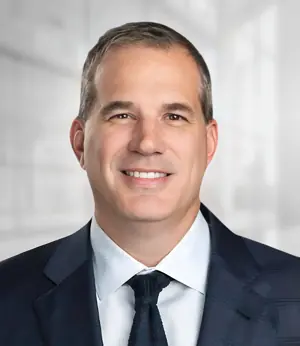President Donald Trump has announced 25 percent tariffs on imported cars, light trucks, and auto parts to revive American manufacturing. The 25 percent tariff will be applied to imported passenger vehicles (sedans, SUVs, crossovers, minivans, cargo vans) and light trucks, as well as key automobile parts (engines, transmissions, powertrain parts, and electrical components), with intent to expand tariffs on additional parts if necessary (planned to take effect May 3). An exemption for cars and parts under the USMCA trade pact and limiting the 25% tax only to “non-U.S. content” creates even more confusion and logistical challenges.
This is an extremely fluid situation given what we have seen early in President Trump’s tenure, but automakers and suppliers must remain flexible and agile to meet changing requirements.
Tight rope or tug of war?
The new tariffs represent a delicate balancing act or a tug of war between the possibility of bringing more blue-collar highly skilled manufacturing and technology jobs back to the United States to support the auto industry and the financial burden and economic impacts that come with tariffs or potential trade wars. “There have been countless arguments for and against tariffs, but the reality is, it seems we are trying to turn back the U.S. manufacturing clock, and it is hard to tell how much of a short-term positive impact to manufacturing this will have in offsetting three decades of the “hollowing out of U.S. manufacturing,” said Thomas Alongi, Manufacturing Practice Leader. However, if tariffs are sticky in the mid to long term, we will continue to see more direct and foreign direct investment in U.S. manufacturing to rebuild our manufacturing supply chain due to the size of the U.S. market. Is this a “light bulb” moment for U.S. manufacturing? Seems like now more than ever it is time to reimagine U.S. manufacturing to compete on a global basis. Globalization will not be stopped, so let us show the world we can compete, and most importantly increase productivity through investment in innovative technologies.
Early observations
We have seen pauses and delays on tariffs, so it is a volatile situation that we will continue to monitor, but here are some early observations:
- In the short term, tariff uncertainty will create a freeze in economic investment. Without clarity, many companies will utilize a wait and see strategy. There is not a one size fits all tariff solution, each situation will need to be analyzed to determine the best course of action.
- In the short term, OEMs will take varying approaches by absorbing some of the increase and passing along a portion of the increase to consumers and suppliers. All dependent on how the consumer responds. Initially, those consumers in the market for a new vehicle may accelerate their purchase due to tariffs, followed by a period of slowing demand if prices rise too much.
- Short and mid-term, tariff impact will be very costly for OEMs if they must reroute their production strategies back to the U.S. However, now is the time for automakers truly to implement a build where you sell strategy for those that can make smart investments that reduce costs.
- Smaller suppliers with less leverage will be facing additional challenges, and most will be put in a situation to “wave the white flag” and pass cost increases onto consumers and customers quickly. We will continue to see consolidation along the supply chain as the race to scale accelerates.
- All suppliers will be facing additional cost pressure from customers and must implement cost-cutting strategies and evaluate their supply-chains for alternative sources or price concessions. All the while forgoing investments to conserve cash until such time the industry completes the adjustment to the new costs.
Like anything, there will be opportunities and there will be winners and losers, those that adapt early to disruption may separate themselves from the rest during these challenges.
Trusted guidance from industry leaders
Our Automotive Practice has been emphasizing building a culture of continuous cost improvement and investment in technology to compete on a global basis for the last decade. Our industry-experienced professionals can assist automotive suppliers and manufacturers that may be exposed to these tariffs with planning and reviewing sourcing. Fill out the form on this page to speak with a member of our Automotive Practice.
Have a Question?
Complete this form to ask our professionals a question.
By submitting this form, you agree to be contacted by UHY regarding your inquiry. We will reach out via email or phone to discuss your needs further.








